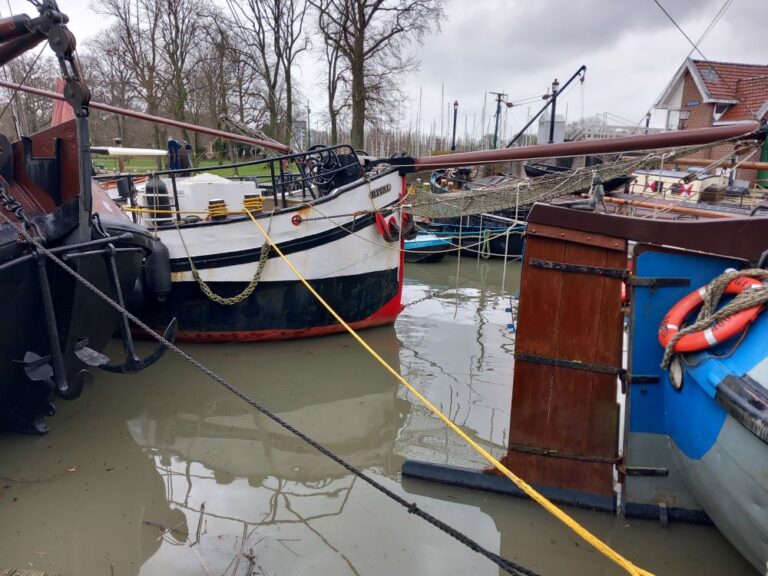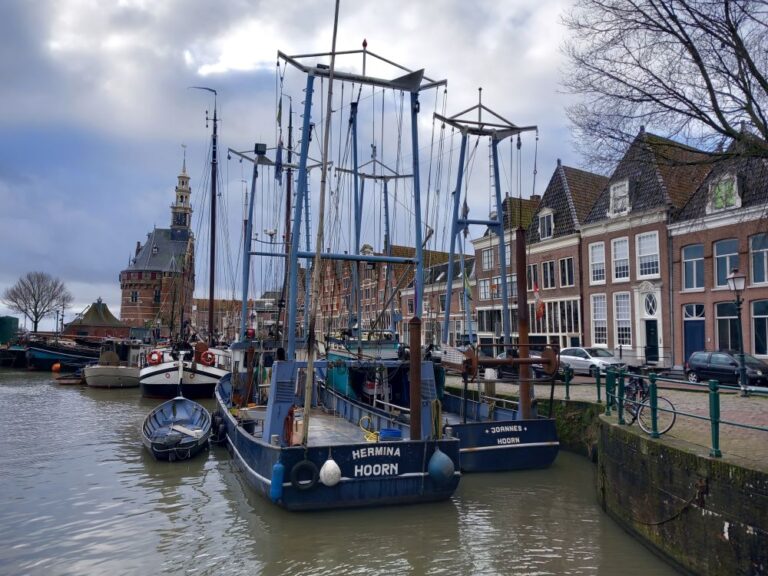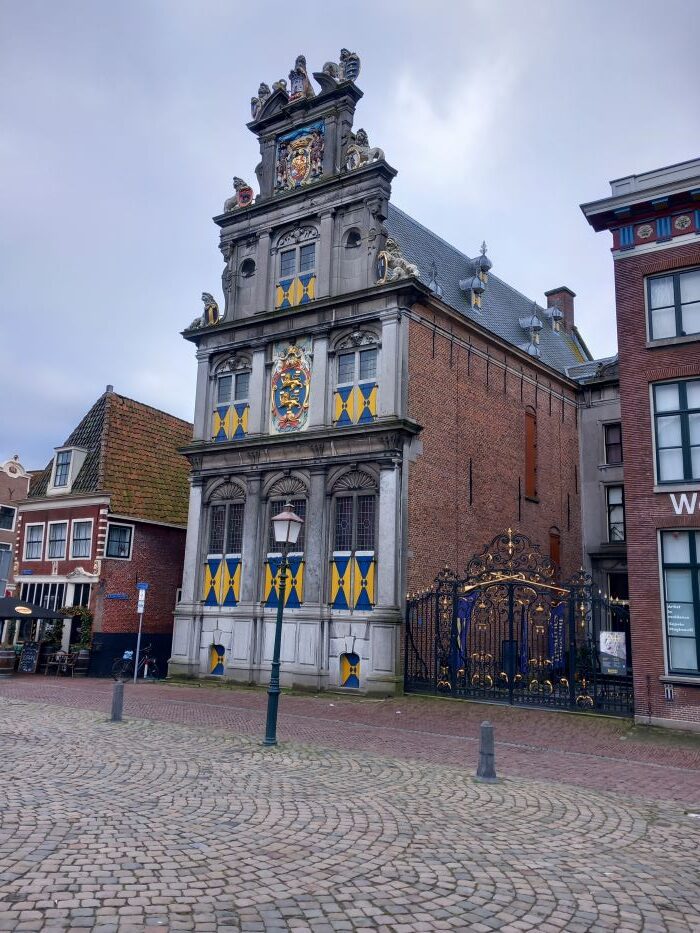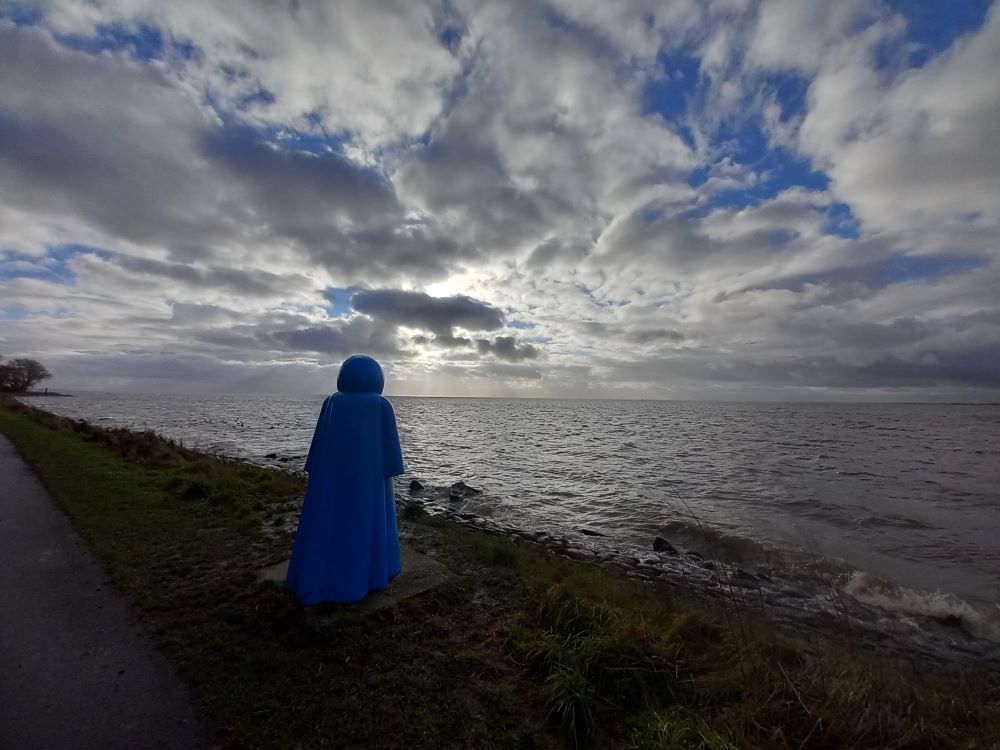Winter may not be the best time to visit Hoorn, but it does give you some context on the hardy sailors that were bred in this town four hundred years ago.
Today, Hoorn is an almost forgotten harbour on the fresh-water Zuiderzee; forty minutes by train from Amsterdam. But back in the sixteenth century, way before the Zuiderzee was separated from the North Sea by the Afsluitdijk dike, it was an important port, on a par with Amsterdam.
Hoorn was one of the six ‘chambers’ that went on to form the Dutch East Indies Company (VOC) in 1602, and from its ‘horn’ shaped harbour, East Indiamen ships sailed to the Americas and Asia throughout the sixteenth and seventeenth centuries.
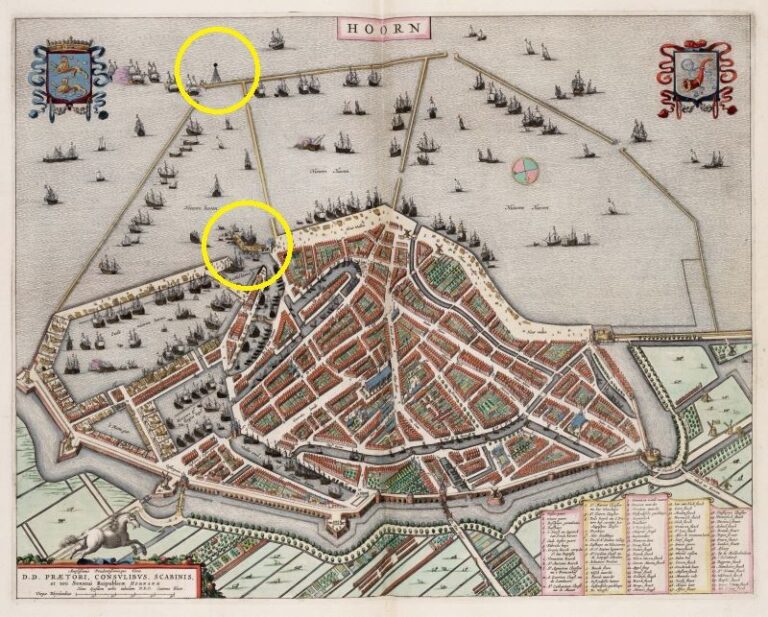
It was a golden age for Hoorn, its little harbour crammed with ships and sailors from India, the East Indies (modern Indonesia), China and the Spice Islands; wharves and warehouses filled with pepper and spices and silk and porcelain; merchants from all over northern Europe arriving to purchase their share of Hoorn’s specie.
Famous sons of Hoorn included Cornelius Jacobsen May, the first European to sail into the Hudson River; Willem Bontekoe, a celebrated VOC captain; and Jan Pieterszoon Coen, the brutal but efficient VOC governor and founder of Jakarta, but the most immortal of it’s sailors was Willem Schouten, an explorer and sea captain who, in 1616, was the first man to round the southern tip of the New World, and named the southern-most headland of South America after his home town. Prior to that, explorers followed in the path of Magellan through a narrow, treacherous ice-bound strait that winds between the Pacific and Atlantic Oceans.
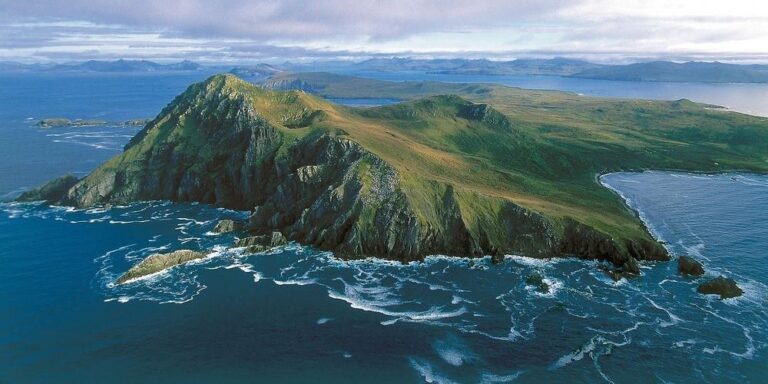
Not that the route Schouten pioneered was benevolent compared to the Magellan Strait; just the opposite. Ships entering the Pacific from the east faced the gale force winds and mountainous seas of the ‘Roaring Forties’ 56 degrees south of the equator, and they faced them ‘on the nose’. The wind and waves blow uninterrupted south of Australia and Africa, and then must funnel through the narrow Drake’s Passage between Cape Horn and Antarctica.
So why use it? Well, it was initially thought to be the quickest route to Asia from Europe, and for the Dutch it avoided the Portuguese controlled Indian Ocean. Later it was realised that sailing south through the Atlantic and then turning left around the Cape of Good Hope was much faster. The VOC went on to perfect the Brouwers Route, which used the power of the every-blowing westerlies for a fast passage to the East Indies. You just had to remember where to turn left again before hitting Australia (like the Batavia).
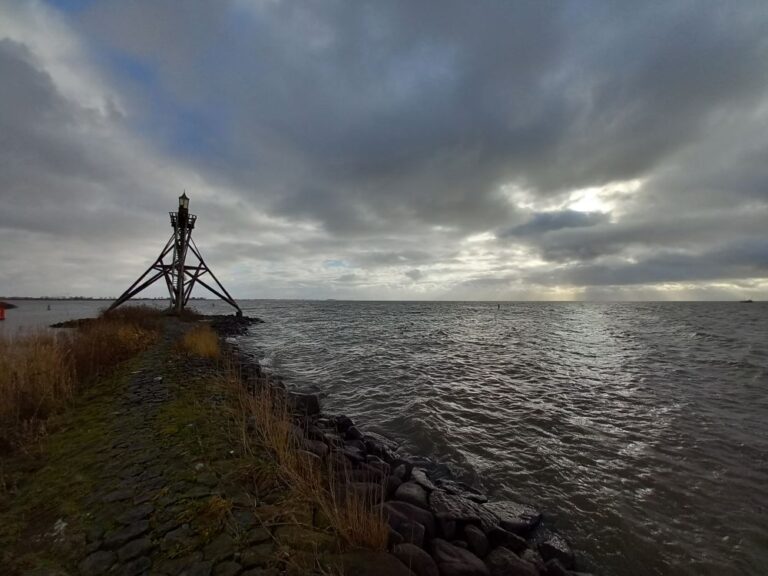
During the California Gold Rush of the 1850’s some of the fastest commercial sailing passages ever recorded were made by American clippers rounding Cape Horn sailing west. The superlative Flying Cloud made San Francisco from New York in 89 days, a feat never bettered to this day by a working sailing vessel. Donald McKay’s beautiful Lightning went the other way from Melbourne to Liverpool via Cape Horn in just 64 days, another record never to be beaten. And the fastest 24-hour passage ever-at 465 sea miles-was achieved by another McKay ship, Champion of the Seas, which went down off Cape Horn in 1877.
The last working tall ships to round the ‘Horn were the four-masted barques Pamir and Passat, in 1949. Nowadays it is one of the ‘three capes’ (the others being Cape Leeuwin and the Cape of Good Hope) that form the racetrack for sail circumnavigations. The Volvo Ocean Race and the Vendee Globe are two of the more notable. Frenchman Charlie Dalin won the latest Vendee in January 2025 in a 64-day single-handed passage in a foiling 60-footer at an average speed of nearly 18 knots! But if you want to see how the old boys used to do it, watch this.
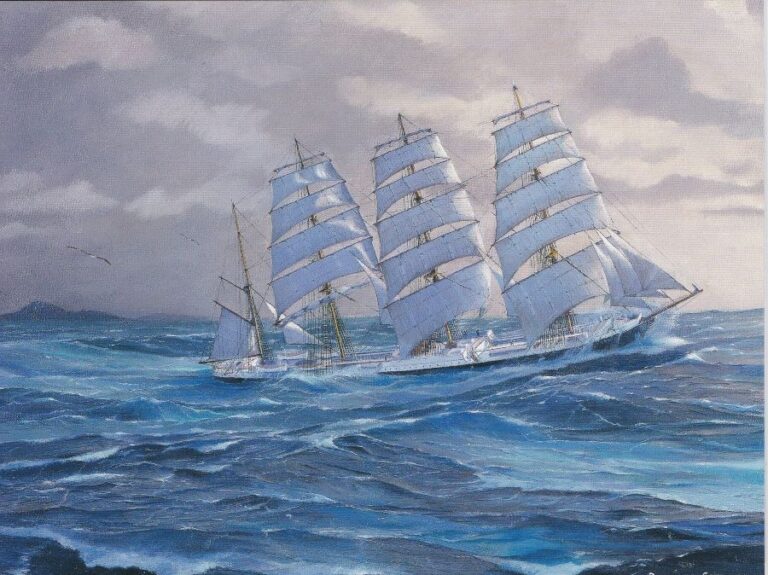
But, back to old Hoorn. I arrived at the quaint railway station under miserable skies after a journey across the water-sodden green flats and criss-crossed canals of Holland. There is the modern town, but south-east of the station you can wander through the old quarter of brick-paved streets lined with neat two-story residences with dormer windows and gabled eaves.
One of my points of call, the Cape Horners Foundation of Holland, was sadly not open. It is winter. It is one of several such foundations around the world dedicated to the memory of men under sail who rounded the world’s most remote and dangerous cape. Next time.
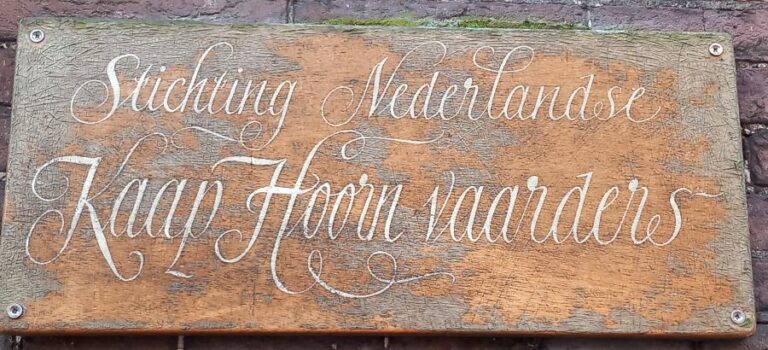
I make it down to the headland that encloses the modern yacht harbour. There is a collection of sculptures looking out into the grey Zuiderzee as a biting easterly blows in. At the little point is an angular timber pyramid structure topped by a lantern which serves as the channel marker for the harbour entrance. Looking at some old maps later, I see that it was shown as early as 1649.
The rain comes down as I trudge back around to the old harbour, the only one foolish enough to be outside. I convince myself that the discomfort is nothing compared to dodging icebergs as implacable Cape Horn looms out of a winter’s night amid mountainous swells.
There is a little island reached across a drawbridge containing a museum (closed for winter) and a hotel, both in solid old brick buildings harking from a forgotten era. Then I come across the towns gem; the impressive Hoofdtoren, the harbour master’s tower, dating from 1532 perched at the apex of a number of canals that reach the outer harbour via a lock.
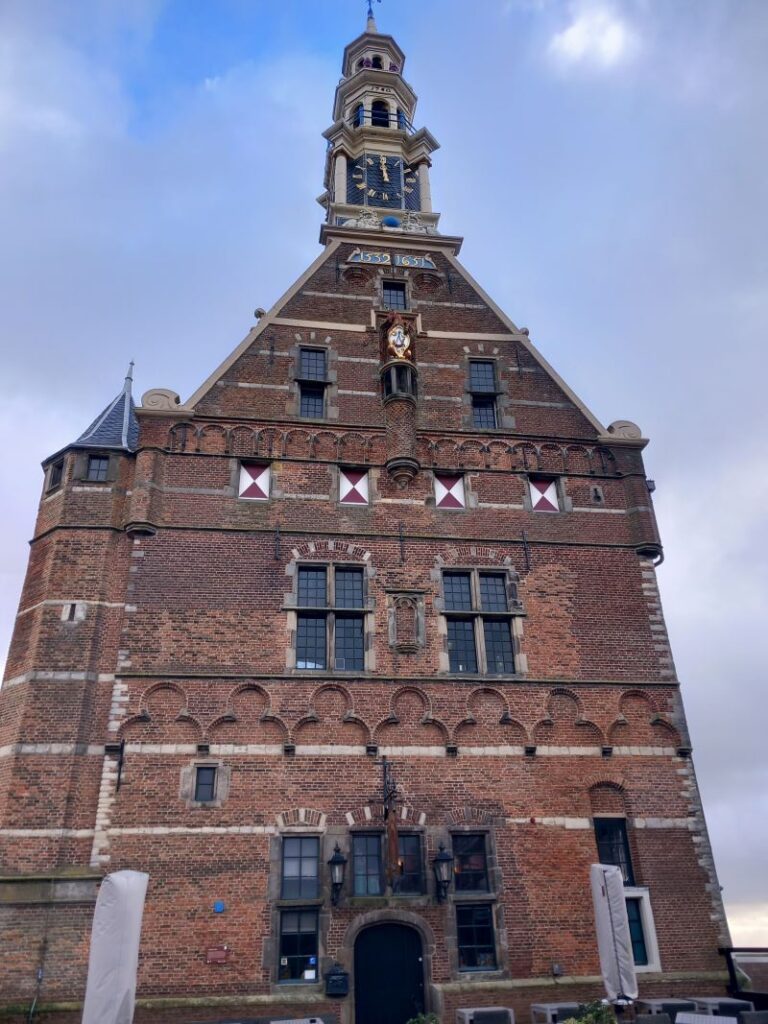
There are some barges dredging the outer harbour, and another barge-mounted excavator scooping up the inner anchorage. Sedimentation is clearly a problem. Below the tower is a wharf with a plaque to Captain Bontekoe, whose journal every Dutch kid has read and takes you back to the heady days of the East Indies. There are a couple of fishing boats in harbour, which is always nice to see, but they must have to negotiate some distant locks to get among the salt water fish.
While drinking a beer at a café overlooking the Museumhaven filled with historic ships, I ask an old resident if the local sailors weren’t rather upset about them damming off the Zuidrezee in 1932. It was to control the disastrous flooding he said, and it worked, but of course, Hoorn lost its access to the sea as the price.
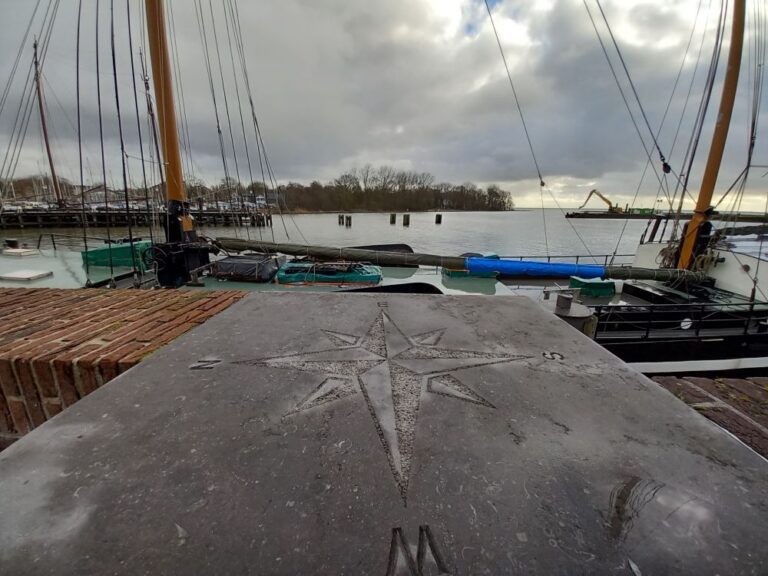
I wander around the deserted streets and over picturesque canals. Impressive historic buildings abound, some leaning and crooked with the years, but all in good order and modernised with respect. Unfortunately, the Westfreis Museum is being renovated and closed. A bite of lunch and its time for the train back.
If you ever have the chance while visiting Amsterdam, a day trip to Hoorn is well worth the effort. You get a nicer perspective of Holland, minus the yahoos that wander the streets at night in the ‘Dam. Go in spring or summer, and do a walking tour around the quaint historic little place. You wont be disappointed. I’ll be back. Just not in winter.
And if you should ever sail around Cape Horn, do get in touch. There’s a stiff rum in it for you. Two if you go west!
